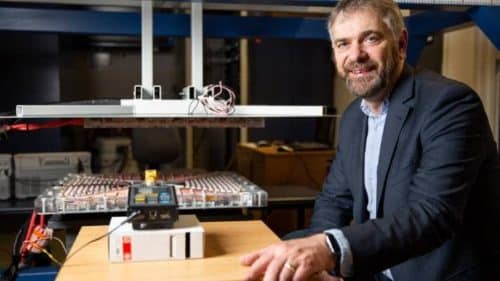Switching to electric vehicles (EVs) is a requirement of international agreements and government policy. Professor Grant Covic of Auckland University leads a team investigating inductive power transfer technologies (charging pads) that wirelessly recharge vehicles.
The technology is called “Energy Snacking”. An EV that has snacked during the day as it drives around or remains parked will be less energy hungry in the evening, reducing the strain on the electricity grid when power demand rises. Wait times at charging stations, range anxiety, continual worry about plugging in, safety, and wear and tear on electric lines will all be reduced, but high EV prices will remain an issue.

Professor Grant Covic of Auckland University leads a team studying inductive power transfer technologies (charging pads) that wirelessly recharge vehicles. Meeting international agreements and government policies requires a shift to electric cars (EVs).
Snacking technology helps address the issue that electric cars require frequent charging, which is slower than refuelling gasoline vehicles, but grid managers are concerned about meeting peak demand when everyone returns home and plugs their car in.
“One of the concerns the electric industry has is ‘are we going to have to upgrade our transformers’,” Covic says. “If you get or five or six or 10 electric vehicles down a street … then unless the vehicles can snack during the day you’re going to end up with some issues on the transformer. The other thing that’s really good is that when it goes home, it doesn’t actually need a large plugin supply. It’s only doing a top-up, and it’s not that critical.”
“What we need to be able to do is transition all vehicles including a large portion of our fleet and commercial vehicles. When they come into the play they need to have that capability to be able to charge, and so that needs to be managed,” says electromagnetic and electronic design specialist Dr Duleepa Thrimawithana. “If we can go wireless, then we can start to distribute some energy while it’s on the move, the goal being we can minimise the battery. We can improve the whole system, we’re moving away from the model of carry your energy, you can put some energy in while you move,” he says.
Recharging on the go implies a lighter battery, less weight, and the capacity to carry more cargo in a large truck. It also implies that drivers will spend less time at charging stations, taxis will charge on the ranks, and buses will charge at bus stops. People don’t want to engage in cable charging, according to Covic. His technology will aid in the transition to cleaner automotive energy.








